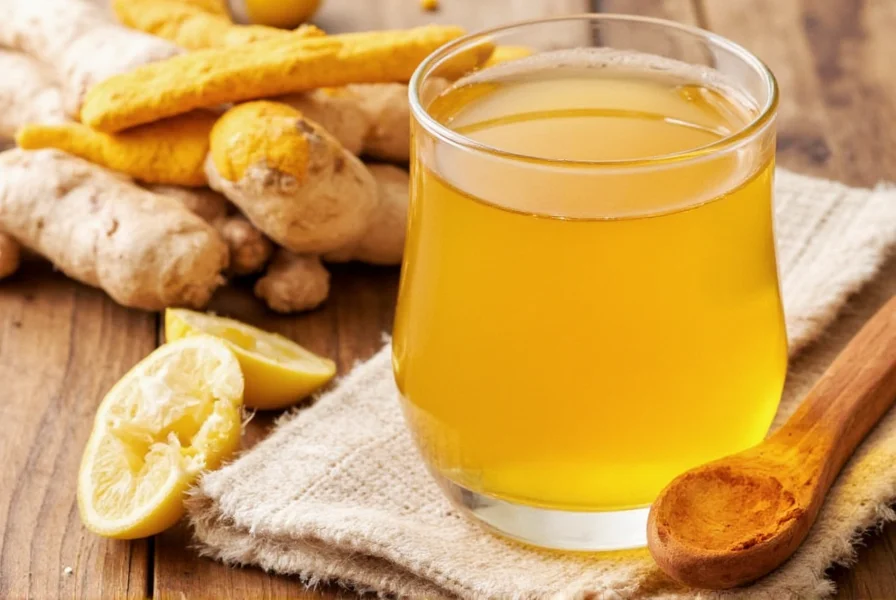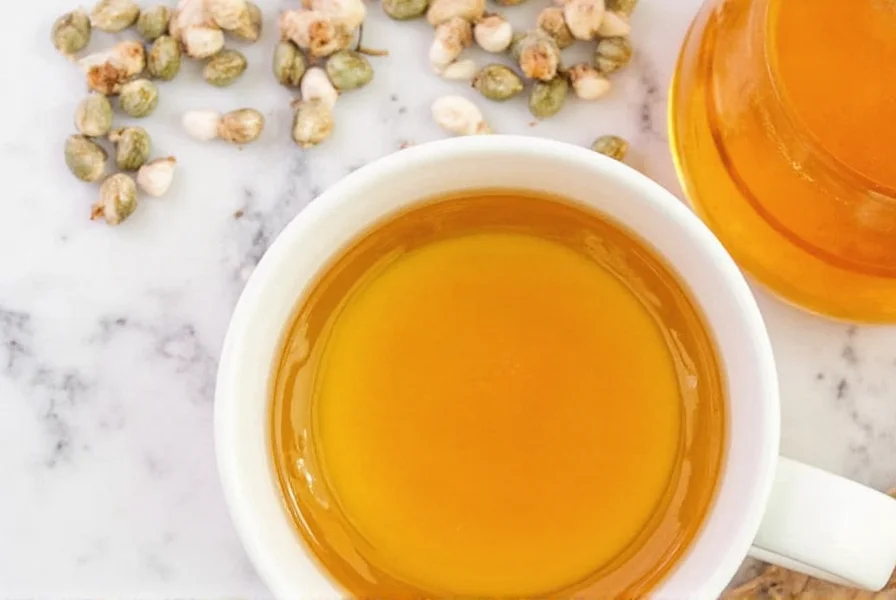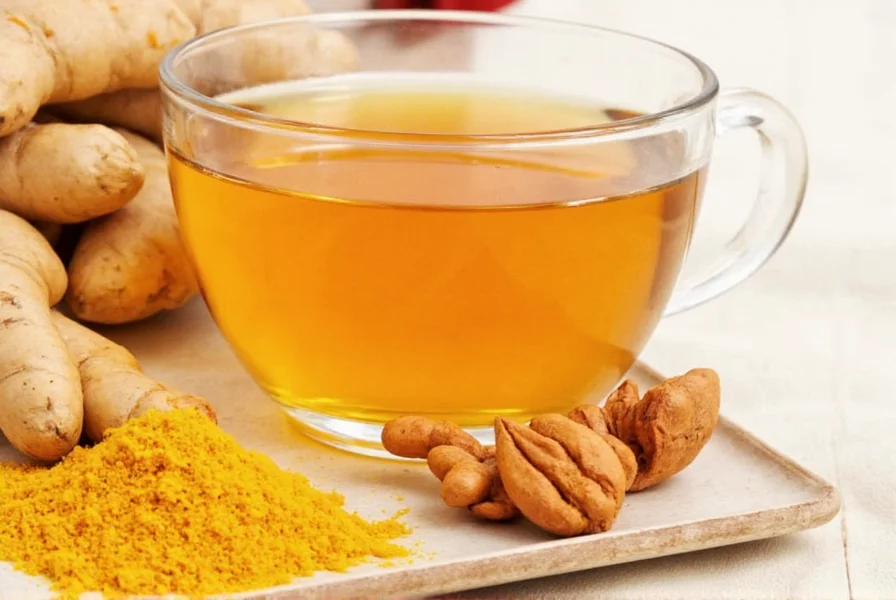For centuries, traditional medicine systems across Asia have combined turmeric and ginger for wellness. Modern research now validates many of these traditional uses, revealing how this golden-hued tea delivers measurable health benefits through its bioactive compounds. Unlike commercial supplements, this simple beverage provides a gentle, food-based approach to incorporating these powerful botanicals into daily life.
The Science Behind Turmeric and Ginger Synergy
Turmeric contains curcumin, while ginger features gingerol—both potent polyphenols with complementary mechanisms. Research published in Food Science & Nutrition demonstrates their synergistic anti-inflammatory effects exceed what either compound achieves alone. When combined in tea form, these compounds create a broader spectrum of activity against inflammatory pathways than when consumed separately.
However, curcumin's notoriously low bioavailability presents a challenge. The addition of black pepper (containing piperine) to your turmeric ginger tea can increase curcumin absorption by up to 2,000%, according to a Planta Medica study. Fat also enhances absorption, which is why many traditional preparations include coconut milk or ghee.
Evidence-Based Health Benefits
Unlike many herbal remedies with only anecdotal support, turmeric and ginger have substantial scientific backing for specific health applications:
| Benefit | Scientific Support | Realistic Expectations for Tea |
|---|---|---|
| Anti-inflammatory effects | Multiple human trials show reduced CRP and other markers | Moderate reduction with daily consumption; less potent than extracts |
| Digestive support | Ginger proven to accelerate gastric emptying; turmeric stimulates bile | Noticeable relief for occasional indigestion when consumed before meals |
| Antioxidant protection | Both compounds neutralize free radicals in vitro studies | Contributes to daily antioxidant intake but not replacement for diverse diet |
| Pain management | Ginger effective for menstrual pain; turmeric for osteoarthritis | Mild relief for minor aches; not substitute for medical pain management |
Preparing Maximum-Benefit Turmeric Ginger Tea
To create a tea that delivers optimal benefits, follow these evidence-based preparation guidelines:
- Use fresh ingredients: Grate 1-inch turmeric root and 1-inch ginger root rather than powders for higher active compound concentration
- Add fat: Stir in 1/4 teaspoon coconut oil or ghee to enhance curcumin absorption
- Include black pepper: A pinch (1/16 teaspoon) significantly boosts bioavailability
- Simmer properly: Boil ingredients for 10-15 minutes to extract maximum compounds
- Add lemon: The acidity helps stabilize curcumin compounds

Safety Considerations and Limitations
While generally safe, turmeric tea with ginger requires caution in specific situations:
- Blood thinning effects: Both ingredients have mild anticoagulant properties. Avoid if taking warfarin or before surgery.
- Gallbladder concerns: Turmeric stimulates bile production, which may worsen gallstones.
- Digestive sensitivity: High doses may cause heartburn in some individuals.
- Realistic expectations: Tea provides much lower concentrations than clinical studies (which typically use 500-2,000mg standardized extracts).
A systematic review in Advances in Nutrition notes that while culinary use is safe for most adults, therapeutic effects require consistent daily consumption over weeks or months. Pregnant women should limit ginger to 1 gram daily (about 1-inch root), and those with iron deficiency should consume turmeric tea between meals as curcumin can inhibit iron absorption.
What Research Still Needs to Confirm
Despite promising findings, several important limitations exist in current research on turmeric ginger tea benefits:
- Most human studies use concentrated extracts, not tea preparations
- Long-term safety data for daily tea consumption is limited
- Optimal ratios of turmeric to ginger remain unstudied
- Effects may vary significantly based on individual metabolism
Researchers at the Linus Pauling Institute caution that while traditional preparations show promise, "the concentrations achieved through dietary intake are substantially lower than those used in clinical trials showing significant effects." This explains why many people don't notice immediate benefits from occasional tea consumption.

Creating Your Personalized Turmeric Ginger Tea Routine
For those seeking to incorporate these benefits into daily life, consider these practical approaches:
- Morning routine: Consume 20-30 minutes before breakfast to support digestion throughout the day
- Post-workout: Drink within 30 minutes of exercise to leverage anti-inflammatory effects
- Evening ritual: Sip warm tea 1-2 hours before bed for relaxation (omit black pepper if sensitive to it)
- Seasonal adjustment: Increase frequency during cold/flu season for immune support
Consistency matters more than quantity—daily consumption of a single cup provides more benefit than occasional large servings. Track your experience in a wellness journal for 4-6 weeks to assess personal effects, as responses vary based on individual biochemistry and health status.











 浙公网安备
33010002000092号
浙公网安备
33010002000092号 浙B2-20120091-4
浙B2-20120091-4